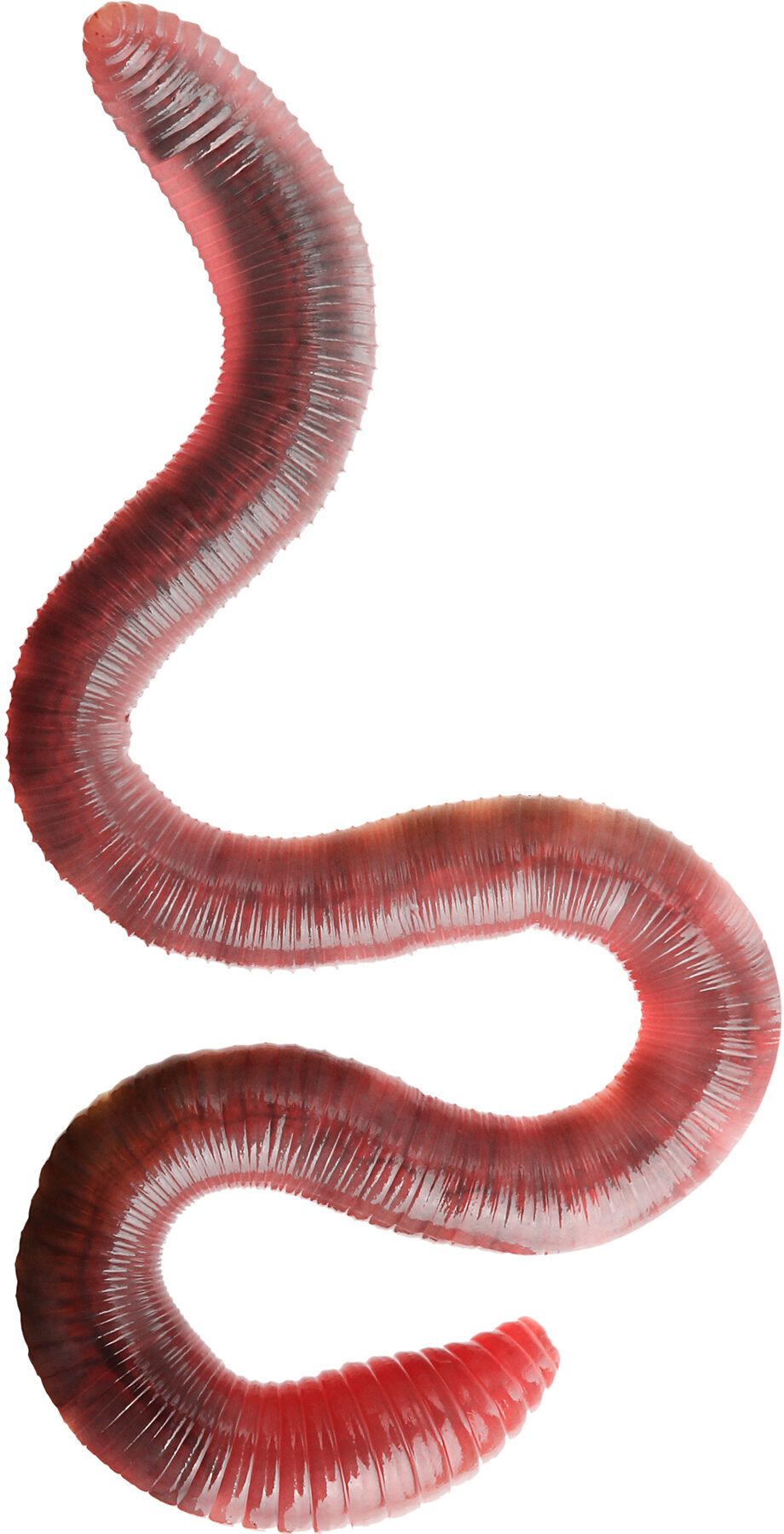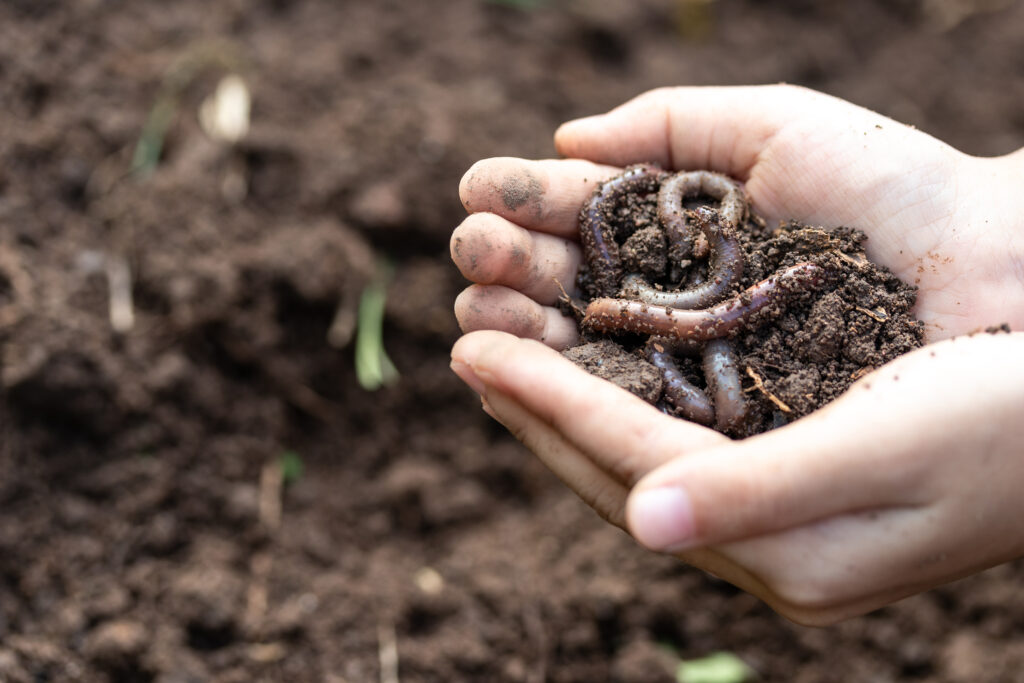
As we toil away in the garden, it’s always a thrill to turn up a few wriggling earthworms. They are, after all, signs that we have helpers in our gardening efforts and we’re doing something right with our soils. So, let’s dig a little deeper into the earthworm’s story.
Earthworms — in partnership with bacteria, fungi and microorganisms — provide vital services to the soil ecosystem by helping decompose plant and animal materials turning them into nutrient-rich, moisture-retaining organic matter. As they tunnel and eat their way through the soil, earthworms also help improve soil quality and texture, which can enhance the availability of water, air and nutrients to plant roots and help reduce issues such as soil compaction and erosion and surface water runoff.
That’s a pretty remarkable list of services provided by these quiet little eyeless, earless, legless creatures that aren’t even OFNA (originally from North America). That’s right, as many of you probably already know, most earthworms found in our soils today were brought here, both accidentally and intentionally, in the 1600s by European settlers. These immigrant worms filled a gap left some 10,000 years earlier after Ice Age glacial activity wiped out the majority of our continent’s native earthworm populations.
In most cases, that’s been a good thing, says Katelyn Kesheimer, an entomologist with Auburn University’s College of Agriculture and the Alabama Cooperative Extension System.
“Earthworms really are great at maintaining soil health and they don’t harm or feed on any of the other critters that we want,” she says.
There are some situations, however, when they can cause problems. One is on highly manicured turf (lawns and golf courses, for example) where earthworms may leave piles of worm castings — worm poop — at the soil surface. Another is in forest ecosystems, where researchers in some states have reported that earthworms are having negative impacts on forest health.
But here in Alabama, Kesheimer says, nonnative earthworms, like nonnative honey bees, are typically welcome immigrants. Not only do earthworms help our soils, their castings have become highly valued sources of slow-release, natural fertilizer.
“I’ve seen more and more growers, whether backyard or small farms, using worm castings as compost,” says Kesheimer, who, as the state’s Extension entomology specialist, works with everyone from homeowners and gardeners to commercial crop growers to answer their insect questions. “The castings are expensive, but the growers who use them swear by them to increase soil fertility.”
In fact, vermicomposting, which can be easily undertaken as a backyard project, allows for more rapid breakdown of kitchen food waste than traditional composting and has the added benefit of supplying fishing worms. (To learn more about it, search for vermicomposting on aces.edu.)
Some other nonnative terrestrial worms, however, warrant concern, though at this point, not panic. One in particular is the hammerhead worm — like the shark, but with no teeth — which Kesheimer said has been here since at least the early 1900s but seems to have been rearing its head more frequently the past couple of years. It’s an entirely different animal (a flatworm rather than a segmented worm) than the earthworm, but it’s often seen in the same environments as earthworms, such as in garden soils and pots. And while it poses no significant physical threat to humans or pets, it does exude a toxin in tiny amounts that may irritate our skin.

If you find a hammerhead worm, Kesheimer said, don’t chop it up and leave it in the soil; it will reproduce from those separate parts — an entomological horror movie come to life. Instead, use gloves or a plastic baggie to remove and dispose of it. It can also be killed by sprinkling it with small amounts of salt or vinegar.
As for earthworms, the best way to sustainably support their populations is to encourage existing populations, not introduce new ones into an ecosystem. Here are a few tips.
- Add organic material to garden soils.
- Leave organic mulch on soil surface.
- Keep soils moist.
- Till less and don’t till deeply.
- Do not use pesticides.
- Avoid introducing earthworms, including fishing worms, into sensitive areas, especially forests.





